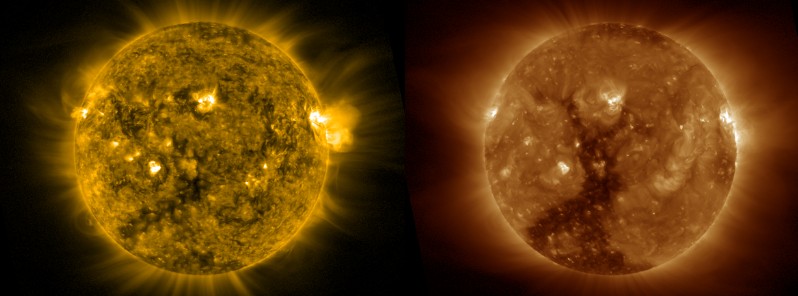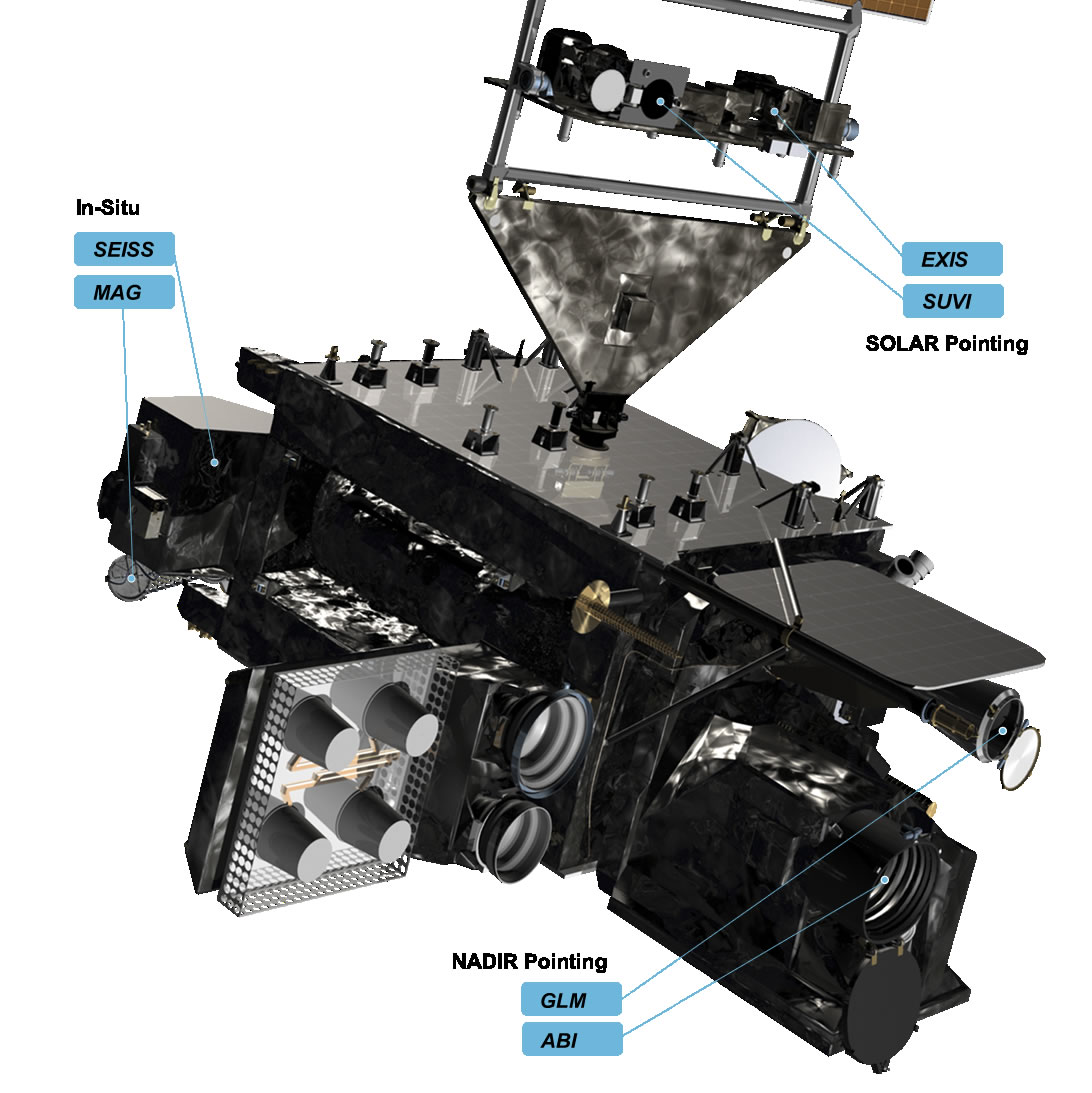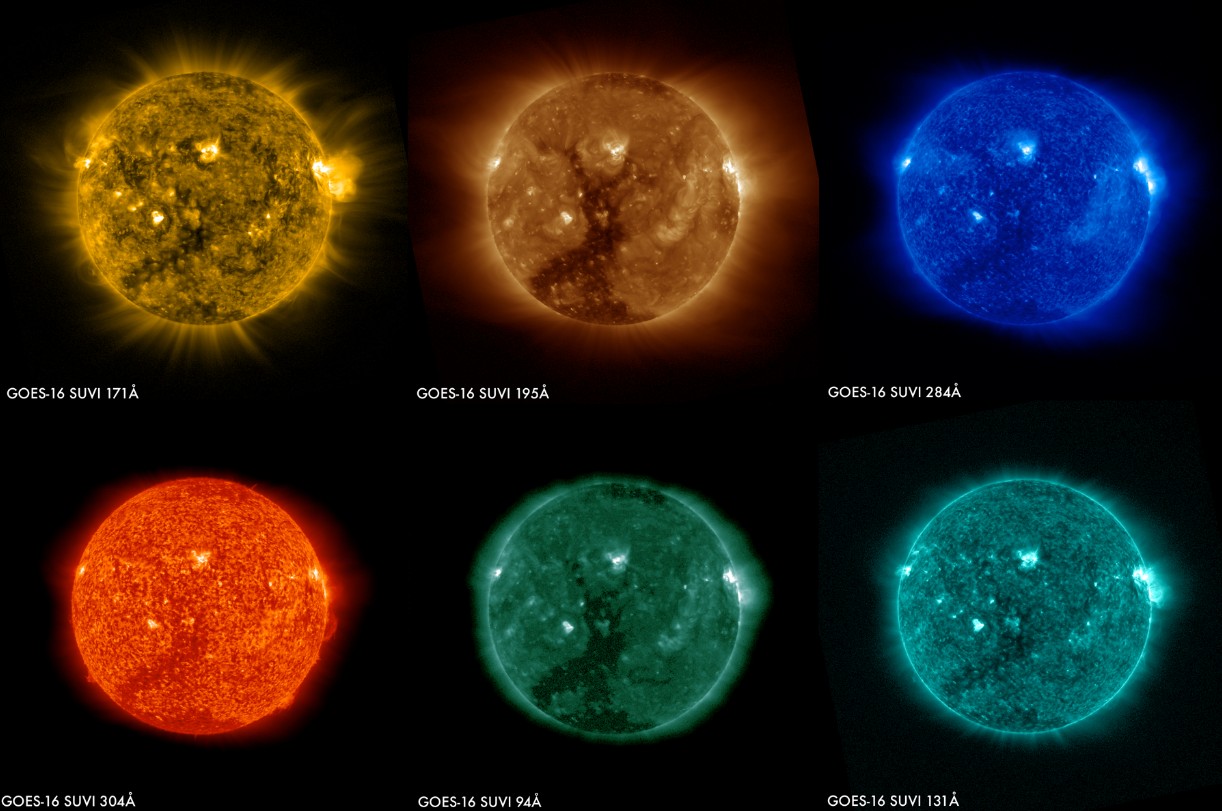GOES-16 delivers its first images of the Sun

NASA's new geostationary satellite GOES-16 (previously known as GOES-R) has successfully captured first images using its Solar Ultraviolet Imager or SUVI instrument. SUVI replaces GOES Solar X-ray Imager (SXI) instrument in previous GOES satellites and represents a change in both spectral coverage and spatial resolution over SXI.
Its first images show a large coronal hole on January 29, 2017. As our star is approaching solar minimum, coronal holes are becoming primary space weather phenomena. The one SUVI captured late last month initiated bright aurora throughout the polar regions.

This animation from January 29, 2017, shows a large coronal hole in the sun’s southern hemisphere from the Solar Ultraviolet Imager (SUVI) on board NOAA's new GOES-16 satellite. SUVI observations of solar flares and solar eruptions will provide an early warning of possible impacts to Earth’s space environment and enable better forecasting of potentially disruptive events on the ground. This animation captures the sun in the 304 Å wavelength, which observes plasma in the sun's atmosphere up to a temperature of about 50,000 degrees. When combined with the five other wavelengths from SUVI, observations such as these give solar physicists and space weather forecasters a complete picture of the conditions on the sun that drive space weather. Credits: NOAA/NASA


Credit: NASA/NOAA
The instrument is located on the Sun-Pointing Platform (SPP) of the satellite, which is located on the solar array yoke. The SPP provides a stable foundation and will track the daily and seasonal movement of the Sun which is critical to the success of SUVI.
SUVI monitors the Sun in the extreme ultraviolet wavelength range and will capture full-disk solar images around-the-clock. It will be able to see more of the environment around the Sun than earlier NOAA geostationary satellites.
The solar corona is so hot that it is best observed with X-ray and extreme-ultraviolet (EUV) cameras. Various elements emit light at specific EUV and X-ray wavelengths depending on their temperature, so by observing in several different wavelengths, a picture of the complete temperature structure of the corona can be made. The GOES-16 SUVI observes the Sun in six EUV channels.


These images of the sun were captured at the same time on January 29, 2017 by the six channels on the SUVI instrument on board GOES-16 and show a large coronal hole in the sun’s southern hemisphere. Each channel observes the sun at a different wavelength, allowing scientists to detect a wide range of solar phenomena important for space weather forecasting. Credits: NOAA
Featured image: NASA/NOAA GOES-16/SUVI

Commenting rules and guidelines
We value the thoughts and opinions of our readers and welcome healthy discussions on our website. In order to maintain a respectful and positive community, we ask that all commenters follow these rules:
We reserve the right to remove any comments that violate these rules. By commenting on our website, you agree to abide by these guidelines. Thank you for helping to create a positive and welcoming environment for all.